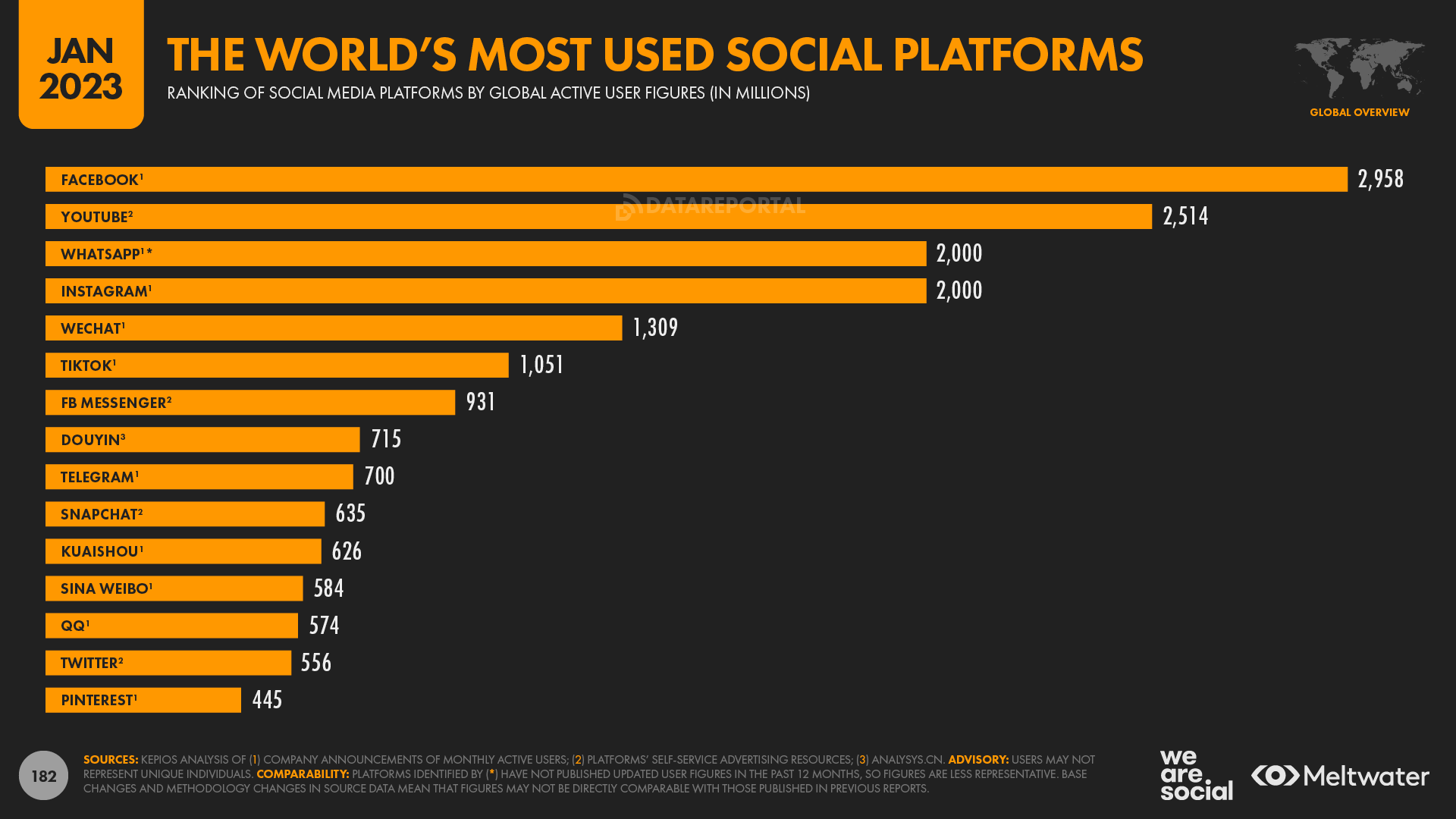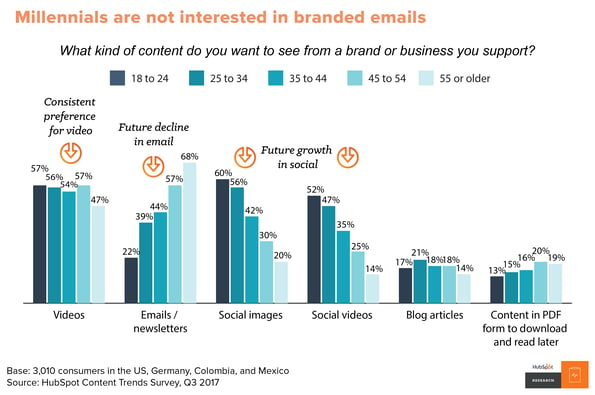Publishing a blog can generate as much as 68% more leads than traditional marketing. Posting content on social media also produces more high-quality leads.
However, the days of simply writing and publishing content to attract more leads and generate more sales are over. Without effective content distribution, your message will likely become lost in the digital noise.
How do you ensure your content lands in front of the right prospects when they most need it? Let’s talk about why you need a strategy and what steps will get you from publishing mayhem to success.
Key Takeaways:
- A strategic approach to distribution provides the foundation for successful content marketing.
- When done right, distribution pulls all the pieces of your content strategy together into an effective implementation.
- Understanding your target audience and what they need is crucial to effective distribution.
- A plan combined with the right tools can help you simplify your distribution strategy.
In This Article:
- A Content Distribution Strategy Sets You Up for Success
- Distribution Is Content Marketing’s “Ground Zero”
- Content Distribution Is Simpler With Divvy
- Content Distribution FAQs
A Content Distribution Plan Sets You Up for Success
Getting your content in front of the right consumers is the key to a successful content strategy. Even if you go the paid advertising route, ads are little more than a neon sign on the digital freeway without effectively targeting the right audience.
The same goes for your owned channels: your website, blog, catalogs, email communications, call centers, and newsletters. While it’s true that you can control what content you produce, if the content doesn’t reach the right audience, your hosting fees, labor costs, and other expenses aren’t earning their keep.
Social media platforms provide free (and paid) channels for content distribution. However, they operate under someone else’s control. If your favorite social media platform suddenly changes its policies — or even tanks — you’re out of luck.
Remember MySpace? Likewise, we all know just how quickly social media channels change their tactics, making it harder to extend your audience reach.

Source: DATA REPORTAL
You need a way to define your target audience, find out which channels are the best vehicles for distributing your content to those people, and reach them at the right time with the right message. Let’s take a look at the steps involved in an effective content distribution plan.
Distribution Is Content Marketing’s ‘Ground Zero’
Content Marketing Institute’s Jodi Harris put it best:
“The distribution phase is ground zero for your content marketing program — the point where your goals, audience insights, tactical choices, and creative executions get put to the test.”
– Jodi Harris – Director of Editorial Content & Curation
Content Marketing Institute
Content distribution done right can cut through the complexity of media channels to deliver your content to your likely customer’s virtual front door.
Think of it as the difference between mass mailings — those circulars that your local discount mattress store stuffs into your mailbox — and hand-delivered certified mail. The latter gets your immediate attention. The mass-mailed circular? It goes straight into the wastebasket.
After investing significant time and talent into producing top-notch content, you want to ensure it reaches your intended audience. To do so, take a critical look at your current distribution plan. Evaluate its effectiveness by how well it reaches your target audience. Here are six steps to get you started.
1. Research Your Target Customers
If you already have a website and social media, you can use Google Analytics and social media analytics to dig into your audience’s demographics, location, needs, online behavior, preferences, likes, and conversions — whether sales, subscriptions, or clickthroughs. Offline, use customer surveys and feedback to find out which content distribution channels and formats on which your customers prefer to receive information.
A lot can be learned when we understand how our best customers found and ultimately purchased our solutions. Use this survey template to gain valuable insight into their buying journey and shape your content marketing strategy.
2. Conduct a Content Audit
A content audit will help you get a handle on how well your content has performed up to now. We know it’s an intimidating process if you’ve never done one before, but it does get easier and is worth it for the insight it provides.
Assess what content types on which channels performed best with each audience segment. Understanding what hasn’t worked is just as important as discovering what has. You can determine whether you need to remove or retool ineffective assets. Don’t worry, our content audit template can help you get through the process.
3. Choose Your Channels and Formats
Ideally, you’d leverage your owned content channels to distribute content (ex: email). But it pays to balance your online presence with social media and carefully researched paid media. Social media ads are great for directing readers to your blog posts and sales pages. You’ll also need to determine which content formats work best for audiences in each channel. For example:
- Channels: If you sell crafting products and offer classes, Pinterest would usually be a great choice. For fashion houses, Instagram is generally the preferred social media channel. As for ads, place paid posts on the places your customers frequent most often for best results.
- Formats: If your customers prefer visual content, you’ll need to include a ton of infographics and images in written posts. Or, if your videos get more engagement, you’ll need to prioritize video posts.
The most important factor to keep in mind is to focus on your customers — just as you do when choosing which content to publish. It isn’t rocket science. Keep it simple and customer-focused, and you’ll be on track for success.

Source: Hubspot
4. Document Your Content Distribution Plan
No matter the size of your team (yes, even if you’re a solo entrepreneur), documenting your distribution plan is a good idea. At least jot down a few notes about the “why” and the “what.” As you review your plan, your notes can jog your memory as to why you decided on TikTok instead of YouTube, for instance, for your main social media distribution channel.
As your business grows and changes, so might your customer base. Review your distribution plan at least yearly (more often if your business has undergone rapid changes). You can couch your distribution plan within your content strategy to ensure it aligns with your content and company goals.
5. Choose a Distribution Platform
One thing you might consider is a content marketing platform. Not only can it keep track of your content distribution plan, but it can also keep you and your team organized and on the same page with a content calendar, collaboration tools, and other amenities to streamline and simplify content production and distribution.
If you’re a solo entrepreneur, a content platform can automate various processes and keep your content production on track. Regardless of your situation, having such a tool can save you a lot of time — time you can better spend building your business.
6. Promote, Reuse, and Recycle
When you publish a blog post or video, promote it on every channel where your target customers hang out. Keep a close eye on your content analytics program to identify your top performers on each of your content distribution channels. Divvy’s platform makes it easier to track content performance, aggregating data from across channels and presenting results in an easy-to-read and comprehensive report.
Once you’ve identified your crowd-pleasers, brainstorm ways to repurpose them into new content. For instance, a blog post explaining how to operate your new widget can become an explainer video. If your highest-performing blog post describes how your widget can solve various problems for other businesses, you could expand it into a white paper or an ebook.
Or, you could explore the same topic from a different angle. Use your earlier high-performing content as a springboard and take it in a different direction. For example, reincarnate your how-to blog post featuring your new widget as a new post or demo video highlighting all the ways your customers can use it to make their lives easier and their businesses more profitable.
Content Distribution Is Simpler With Divvy
Make the most of your content with a well-organized content distribution plan that reaches everyone who needs your products and services. Divvy’s platform turbocharges your distribution plan, providing the tools your team needs to plan, create, publish, and analyze. Request a demo today to see how we simplify content production and distribution.
Content Distribution FAQs
What Are the Benefits of Content Distribution?
Content distribution using an effective content strategy increases brand exposure and awareness, boosts website traffic, SEO, and sales, and provides a higher return on investment than outbound marketing. It can also establish thought leadership, increase consumer trust, and nurture relationships. Content benefits your audience by providing answers to their questions, support for relevant challenges they experience, and the information they seek.
How Do You Create a Perfect Content Distribution Strategy?
The perfect distribution strategy for content involves six elements: 1) target audience research, 2) a content audit, 3) selection of content channels and formats, 4) a documented plan, 5) an effective planning and distribution platform, and 6) analytics and repurposing great content. It is an essential component of an overall content strategy and should align with and support your content and business goals.
What Are Content Distribution Tactics?
Distribution tactics for content are the planning and organizational strategies you use to ensure your content reaches the right people and provides the information and solutions they seek. These tactics include researching and understanding your audience as well as choosing the content topics, formats, and channels they prefer.
What Are the Three Types of Content Distribution Channels?
The three types of channels for distributing content are owned, paid, and earned. Owned channels include your website, blog, communication (email and messaging), and printed materials. Google or Amazon ads would be paid channels, while earned channels are any media format that draws attention to your brand with no input or direct influence from you. Social media can be any one of the three types.
